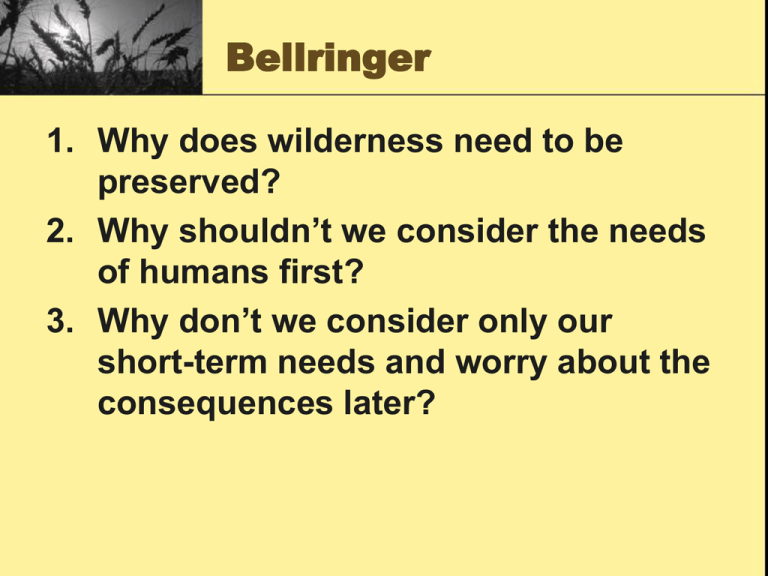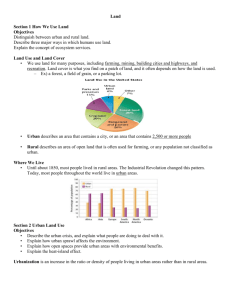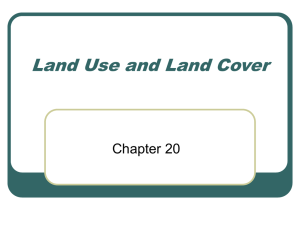How We Use Land Section 14.1
advertisement

Bellringer 1. Why does wilderness need to be preserved? 2. Why shouldn’t we consider the needs of humans first? 3. Why don’t we consider only our short-term needs and worry about the consequences later? Objectives: 1.Describe ways to preserve farmland, rangeland, and forest land. 2.Explain the functions of parks and wilderness areas. Land Management and Conservation Section 14.3 Main Categories of Rural Land 1. 2. 3. 4. 5. Farmland Rangeland Forest land National and State Parks Wilderness Farmland • • • • Used to grow crops and fruit Provides an important oxygen source Moderates temperatures National Farmland Protection Program helps protect farmland in danger of being paved over or developed. Rangeland • Land that supports different vegetation types and that is not used for farming or timber production (anything from deserts to swamp land) • Most common use is for grazing of livestock, so essential for world’s food supply Rangeland (cont.) • Problems – Overgrazing – allowing more animals to graze than the land can support – Once plants are gone (due to overgrazing), soil can erode. Rangelands (cont.) • Maintaining the Range – Public Rangelands Improvement Act of 1978: aims to improve land management practice. – Leave land unused to let vegetation recover. – Limit herd sizes to prevent overgrazing. – Killing invasive plants and replanting native plants – Dig several small watering holes to spread herds out over larger areas. Forest Lands • Harvesting trees – Clear-cutting: removing ALL trees from an area of land • Destroys wildlife habitats • Causes soil erosion – Selective cutting: cutting and removing only middle-aged or mature trees • More expensive • Less destructive – minimizes impact on the forest Forest Land (cont.) • Deforestation: clearing trees from the land and not replacing them – Reduces wildlife habitats – Soil erosion – Local climate change – Usually happens as populations expand and need more land for homes, businesses, and roads • Reforestation: replanting to reestablish trees that have been cut down in a forest land Parks and Preserves • 1870 – Yosemite became the first national park • Wilderness: an area in which the land and its ecosystems are protected from ALL exploitation • These protected areas are still threatened by growing populations: – trash from visitors – water and air pollution from surrounding areas – climate changes











